Orthodontic treatments are dental procedures that aim to fix tooth and jaw alignment issues. These treatments can improve both the look and function of teeth.
Orthodontic treatments include braces, clear aligners, retainers, and other devices that slowly move teeth into better positions.
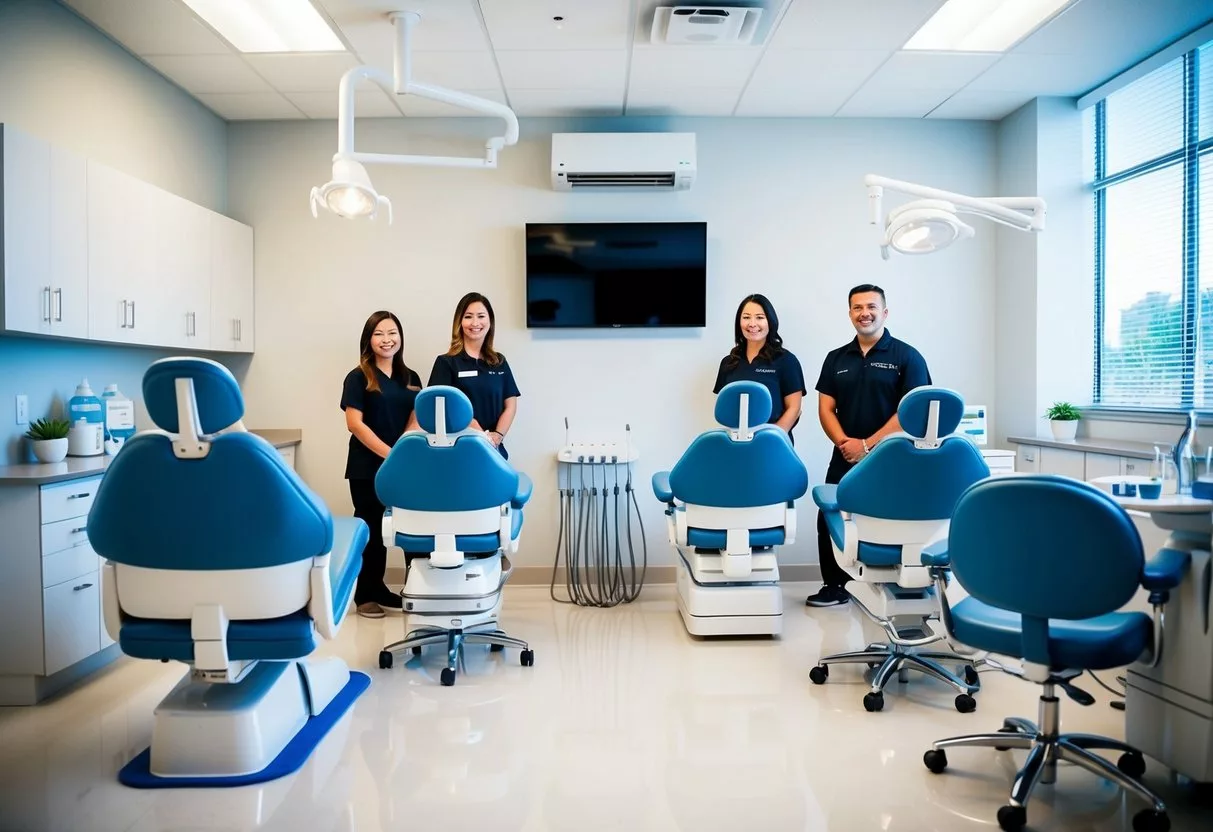
Many people think orthodontics is just for looks. But straight teeth are easier to clean, which helps prevent cavities and gum disease. Good tooth alignment also makes it easier to bite, chew, and speak clearly.
These benefits of orthodontic treatment can have a big impact on a person’s oral health and quality of life.
Getting orthodontic care often involves regular visits to an orthodontist over months or years. The cost can be high, but many dental insurance plans cover part of orthodontic treatments.
It’s worth checking coverage options, as fixing alignment issues early can prevent more serious problems later on.
Understanding Orthodontics
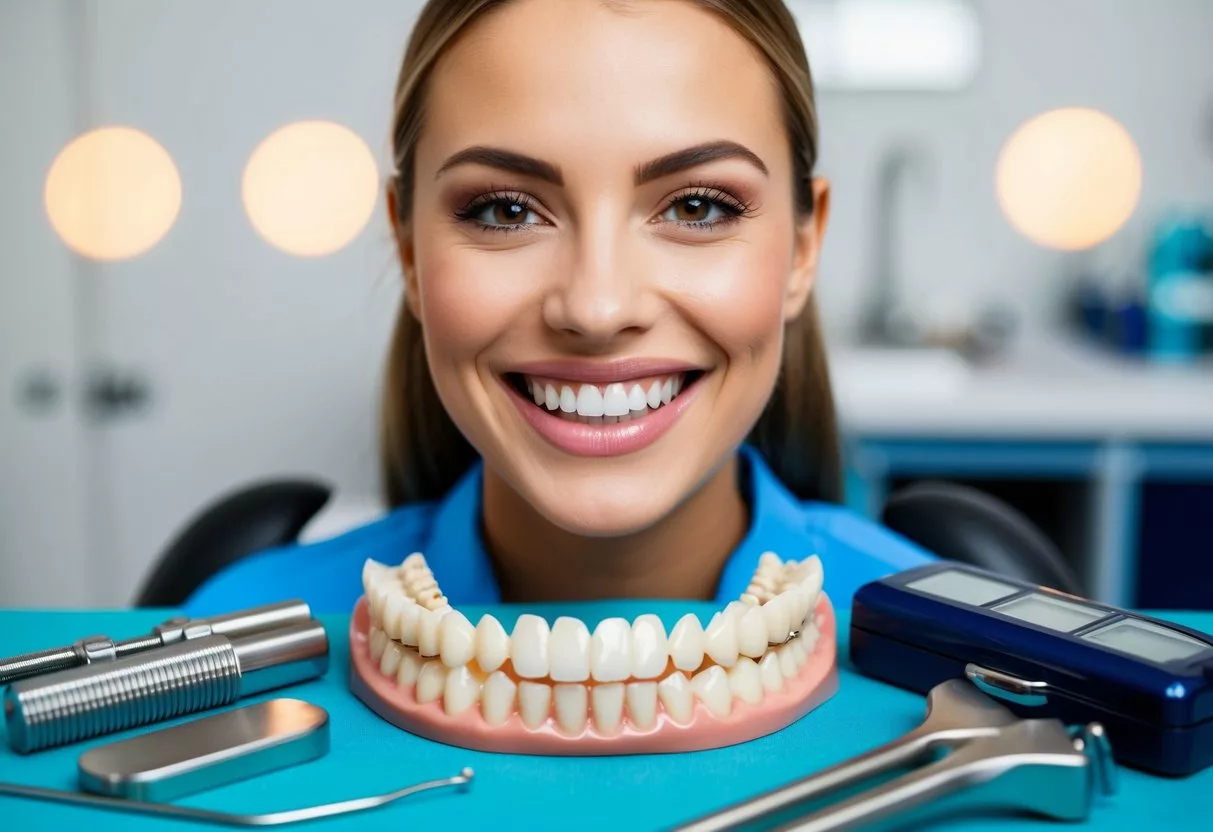
Orthodontics focuses on aligning teeth and jaws for better function and appearance. Orthodontists use tools like braces and clear aligners to fix bite issues and crooked teeth.
Roles of an Orthodontist
An orthodontist is a dental specialist who diagnoses and treats misaligned teeth and jaws. They create treatment plans to fix problems like crowded teeth, overbites, and underbites.
Orthodontists use tools such as:
- Braces
- Clear aligners
- Expander plates
These experts work to improve both the look and function of a patient’s smile. They also help prevent future dental problems that can result from untreated alignment issues.
Common Orthodontic Problems
Malocclusion is the medical term for misaligned teeth or jaws. Common orthodontic issues include:
- Crowded teeth
- Crooked teeth
- Overbite
- Underbite
- Crossbite
These problems can make it hard to clean teeth properly. They may also cause jaw pain or trouble chewing.
Fixing these issues can improve oral health and boost self-confidence.
The American Association of Orthodontists notes that 1 in 3 orthodontic patients is now an adult. This shows that it’s never too late to fix alignment problems and improve oral health.
Types of Orthodontic Appliances
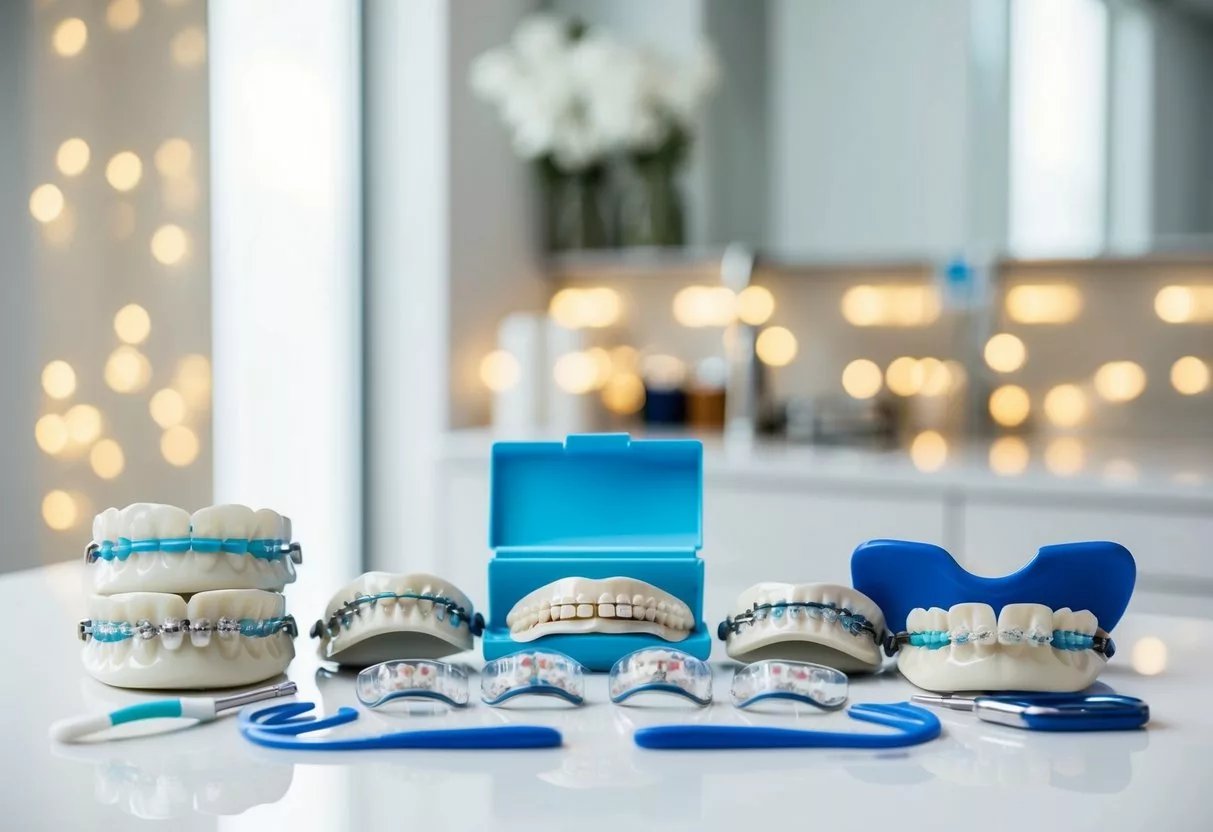
Orthodontic appliances help correct teeth and jaw alignment issues. They come in fixed and removable varieties, each with specific uses and benefits.
Fixed Appliances
Fixed appliances stay attached to the teeth during treatment. Traditional metal braces are the most common type. They use brackets and wires to slowly move teeth into place.
Ceramic braces work like metal braces but blend in better with teeth. They’re less noticeable but can cost more.
Lingual braces attach to the back of teeth. They’re hidden from view but can be harder to clean.
Self-ligating braces don’t need elastic bands. They may require fewer adjustments.
Removable Appliances
Removable appliances can be taken out for eating and cleaning. Clear aligners are popular. They’re nearly invisible plastic trays worn over teeth.
Retainers help keep teeth in place after braces come off. Some are worn only at night.
Palatal expanders widen the upper jaw. They’re often used for kids and teens.
Headgear treats overbites by moving the upper jaw and teeth backward. It’s usually worn for a few hours each day or while sleeping.
Braces and Aligners
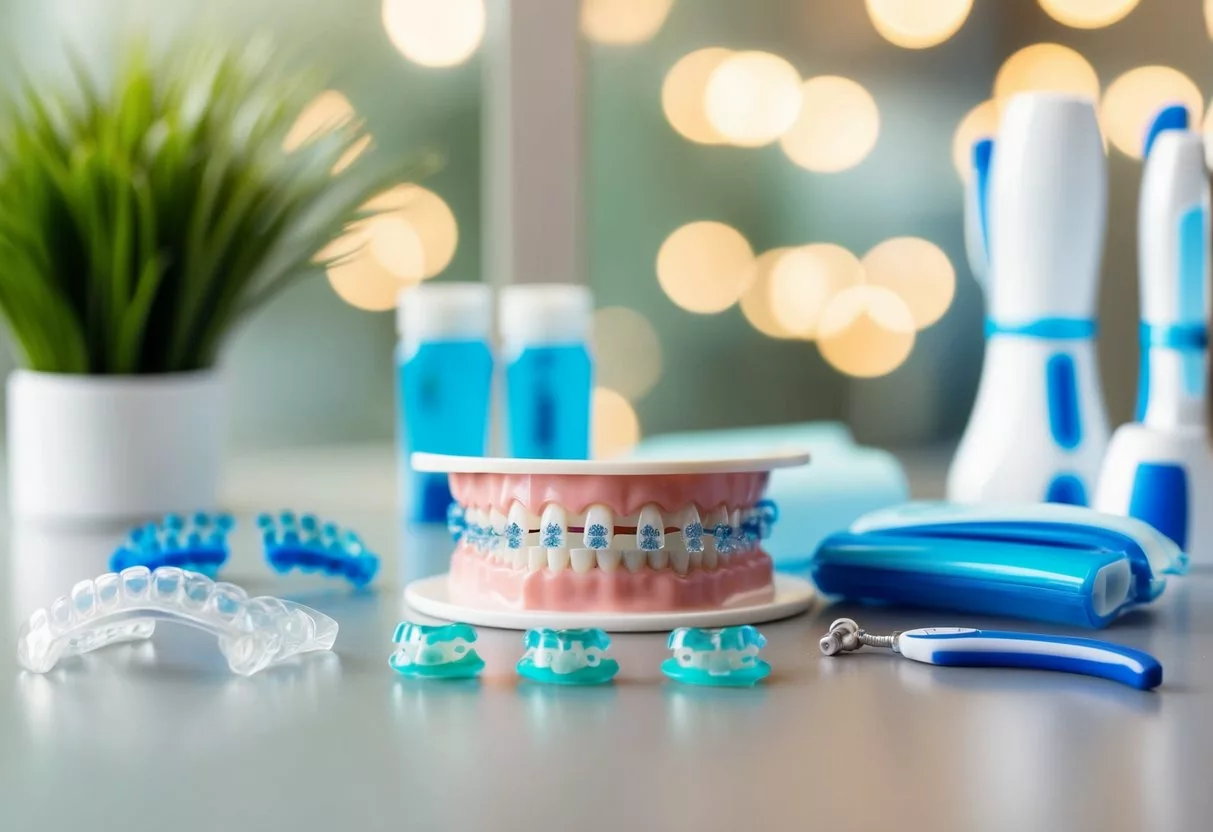
Orthodontic treatments use different types of braces and aligners to straighten teeth. These options vary in appearance, cost, and treatment time. Each type has its own pros and cons.
Traditional Metal Braces
Metal braces are the most common type of braces. They use metal brackets and wires to move teeth into place. The brackets are glued to the front of each tooth. A thin wire runs through the brackets and puts pressure on the teeth.
Metal braces work well for complex teeth issues. They often give faster results than other options. Many kids and teens like that they can change the colors of the bands on their braces.
The downside is that metal braces are very visible. They can also irritate the inside of the mouth at first. Braces typically cost between $3,000 and $7,000, depending on the case.
Ceramic Braces
Ceramic braces work like metal braces, but the brackets are made of clear or tooth-colored ceramic. This makes them less noticeable than metal braces. The wire can also be tooth-colored.
These braces are popular with adults and older teens who want a less visible option. They move teeth as fast as metal braces in most cases.
Ceramic braces can stain if not cleaned well. They also cost more than metal braces, usually $4,000 to $8,000. The brackets can be more fragile too.
Lingual Braces
Lingual braces are placed on the back of the teeth instead of the front. This makes them invisible when you smile. They use metal brackets and wires like traditional braces.
These braces are great for people who don’t want their braces to show. They work well for many types of teeth problems.
Lingual braces can be hard to clean and may affect speech at first. They often cost more than other types, ranging from $8,000 to $10,000. Not all orthodontists offer them.
Self-Ligating Braces
Self-ligating braces look like regular metal or ceramic braces. The key difference is how the wire attaches to the brackets. These braces use a sliding mechanism to hold the wire instead of rubber bands.
This design can make the braces easier to clean. It may also mean shorter and fewer office visits. Some people find them more comfortable.
Self-ligating braces can cost $3,000 to $8,000. They might work faster than traditional braces for some people.
Clear Aligners
Clear aligners are a series of custom-made, clear plastic trays. They fit over the teeth and gently move them into place. Invisalign is a well-known brand of clear aligners.
Aligners are nearly invisible and can be removed for eating and brushing. This makes them popular with adults. They work best for mild to moderate teeth issues.
Treatment with aligners can take longer than braces. They also require more discipline since they must be worn 20-22 hours per day. Clear aligners typically cost $1,500 to $8,000, depending on the case complexity.
Treatment Process and Duration
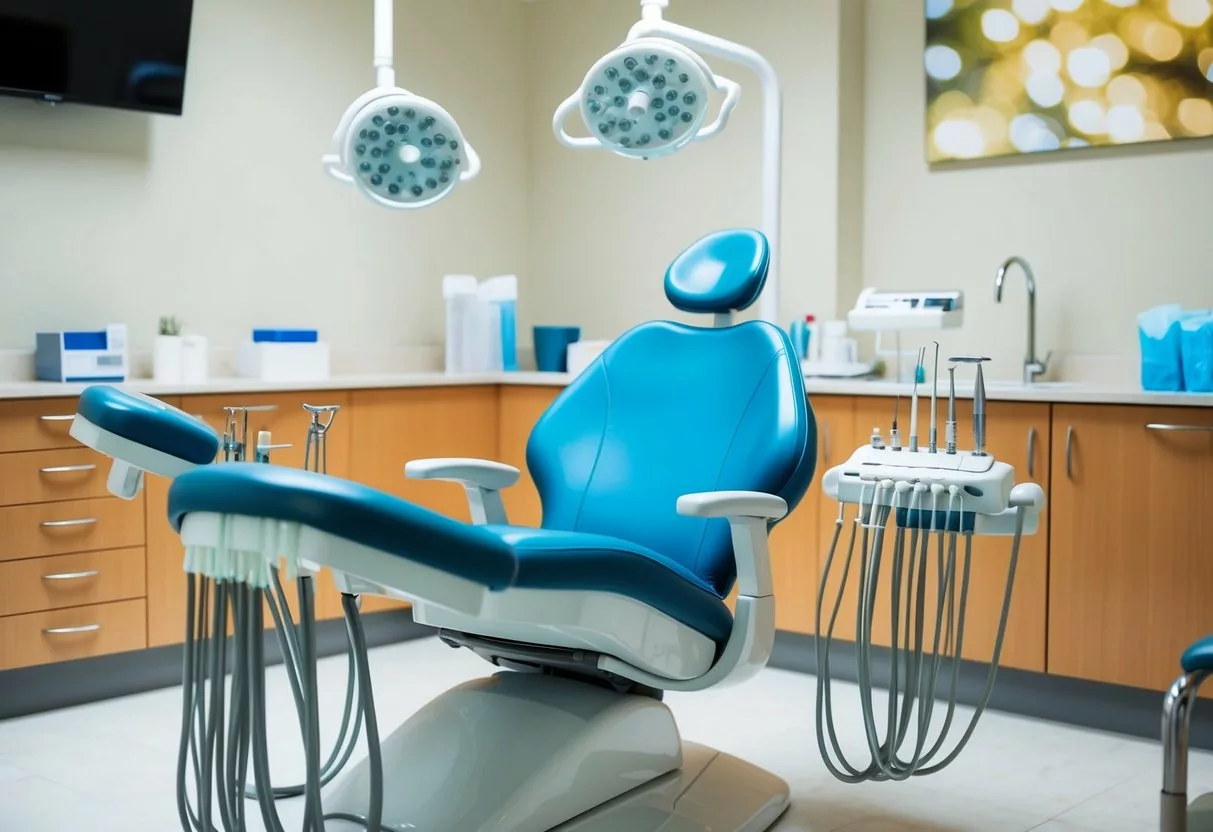
Orthodontic treatment involves several stages to align teeth and improve oral health. The process typically takes 18-24 months but can vary based on individual needs. Patients undergo regular check-ups and adjustments throughout their treatment journey.
Initial Assessment
The orthodontist starts with a thorough exam of the patient’s teeth and jaw. This includes:
- X-rays
- Photographs
- Dental impressions
These tests help create a clear picture of the patient’s oral structure. The orthodontist looks for issues like crowding, gaps, or bite problems. They also check jaw alignment and tooth positioning.
This assessment helps determine the best orthodontic treatment options. Options may include traditional braces, clear aligners, or other appliances. The orthodontist explains these choices to the patient and answers any questions.
Custom Treatment Planning
After the assessment, the orthodontist creates a tailored treatment plan. This plan outlines:
- Specific treatment goals
- Estimated treatment duration
- Type of orthodontic appliance to be used
The orthodontist considers factors like age, oral health, and lifestyle when making these decisions. They may recommend additional procedures like tooth extraction if needed.
Patients receive a detailed explanation of their treatment plan. This includes information about care instructions and expected outcomes. The orthodontist also discusses the estimated treatment duration, which can range from 1-5 years.
Regular Adjustments
Once treatment begins, patients attend regular adjustment appointments. For braces, this usually happens every 4-6 weeks. Clear aligner users may have check-ups every 6-8 weeks.
During these visits, the orthodontist:
- Checks progress
- Makes necessary adjustments
- Replaces parts like wires or bands
These adjustments help guide teeth into their proper positions. Patients may feel slight discomfort after appointments, but this is normal and temporary.
The orthodontist also monitors overall oral health during these visits. They may suggest additional cleaning techniques or tools to maintain good hygiene.
Retention Phase
After active treatment ends, patients enter the retention phase. This crucial step helps maintain the new tooth positions.
The orthodontist provides a retainer, which may be:
- Removable
- Fixed (bonded to the back of teeth)
Patients typically wear retainers full-time for several months. After that, they may switch to nighttime wear only. The exact retention schedule varies based on individual needs.
Regular check-ups continue during this phase to ensure teeth remain in place. The orthodontist may adjust the retention plan as needed. Proper retainer use is key to long-lasting results.
Oral Health Considerations
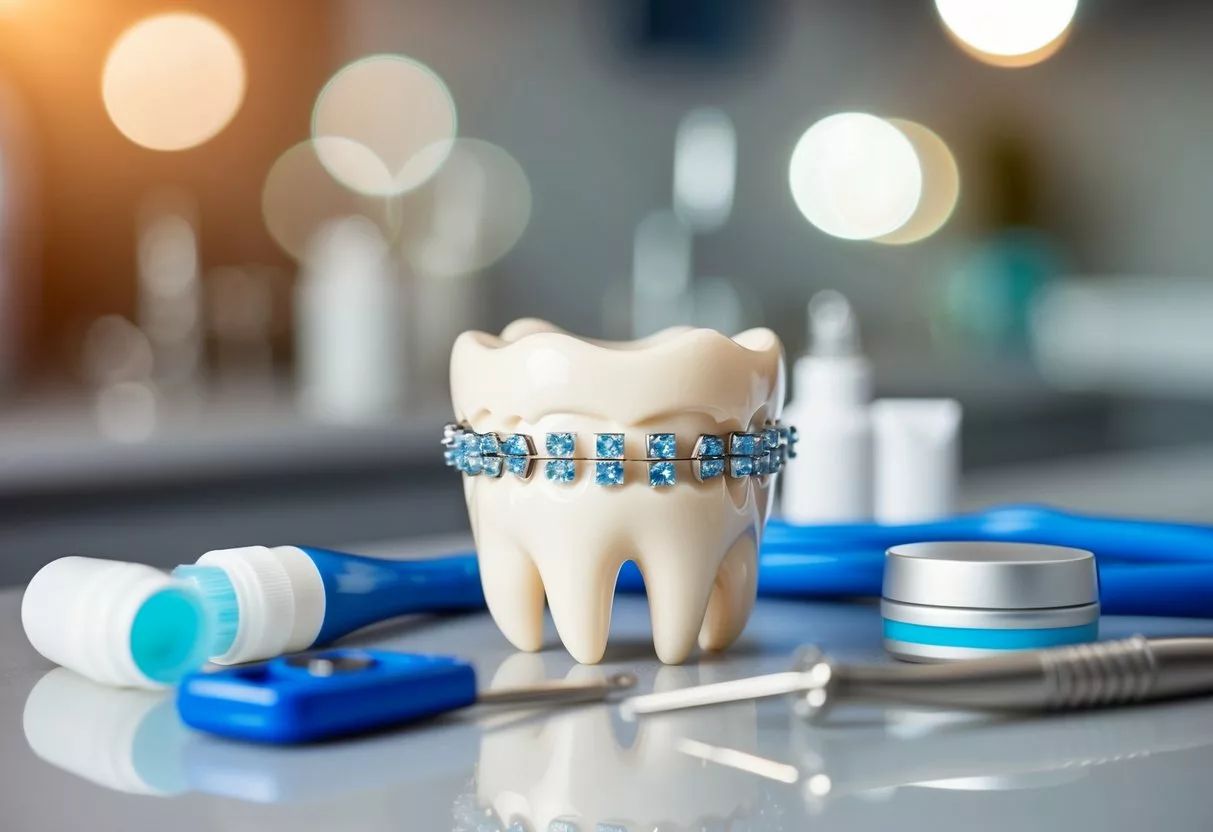
Orthodontic treatment can greatly impact oral health. Proper care during treatment helps prevent issues and promotes overall dental wellness. Patients need to be aware of key considerations to maintain a healthy mouth.
Maintaining Oral Hygiene
Keeping teeth clean with braces or aligners is crucial. Patients should brush after every meal and floss daily. Special tools like interdental brushes help clean around brackets and wires.
Orthodontic devices make it harder to remove plaque, so extra effort is needed.
Regular dental cleanings are important. Dentists may recommend more frequent visits during treatment. This helps catch any problems early.
For aligners, patients must remove them before eating and clean them regularly. Rinsing aligners and brushing teeth before reinserting prevents bacteria buildup.
Impact on Overall Health
Good oral health supports overall wellness. Periodontal health is key during orthodontic treatment.
Gum disease can lead to other health issues if left untreated.
Orthodontic treatment can improve bite and jaw alignment. This may help with:
- Improved chewing and digestion
- Reduced jaw pain
- Better speech
For mouth breathers, orthodontics may help improve breathing patterns. This can lead to better sleep and overall health.
Dental Issues to Watch For
Patients should be alert for potential problems during treatment. Common issues include:
- Cavities: Braces create more places for bacteria to hide
- Tooth decay: Poor cleaning can lead to enamel damage
- Gum inflammation: Irritation from appliances can cause swelling
White spots on teeth may appear if plaque is not removed properly. These spots can become permanent if not addressed.
Wearing a mouthguard during sports protects both teeth and orthodontic appliances. It prevents damage from impacts and reduces the risk of oral injuries.
Choosing the Right Treatment
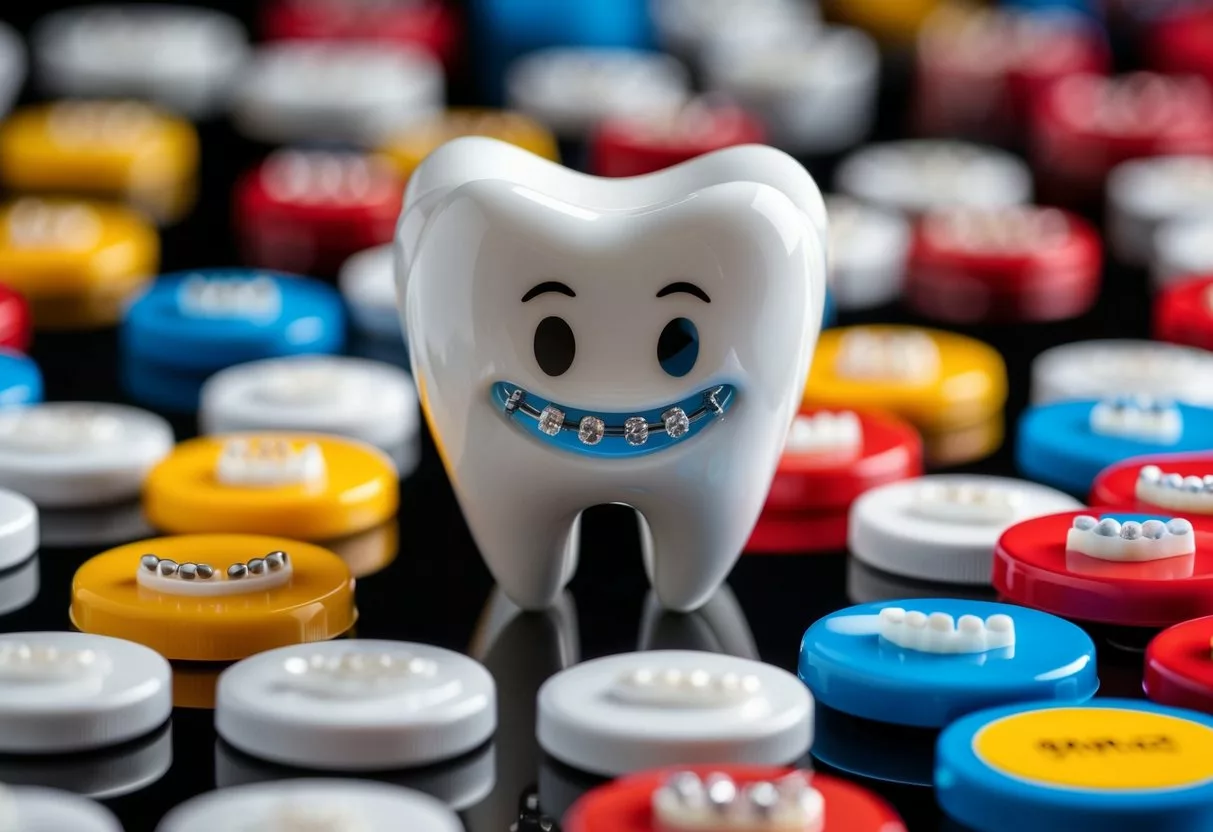
Picking the best orthodontic treatment involves balancing looks, function, and finances. Each person’s needs are unique, so it’s important to weigh all factors carefully.
Considering Aesthetics
Aesthetics play a big role in orthodontic choices. Many people want a nice smile without obvious braces.
Clear aligners are popular for their near-invisible look. They work well for mild to moderate issues.
Ceramic braces blend in with teeth, making them less noticeable than metal. They’re good for more complex cases.
Lingual braces go behind the teeth, hiding them completely. But they can be harder to clean and may affect speech at first.
Metal braces are still an option. They’re sturdy and can handle tough cases. Some kids like picking colorful bands to express themselves.
Functional and Health Goals
Orthodontic treatment isn’t just about looks. It’s about making teeth work better too.
Fixing bite issues can prevent jaw pain and uneven wear on teeth. This helps avoid future dental problems.
Some treatments work faster than others. Braces might be best for complex cases that need more control.
Clear aligners can be removed for eating and cleaning. This makes it easier to keep teeth healthy during treatment.
Your orthodontist will check how your teeth and jaw line up. They’ll suggest the best way to fix any problems.
Financial Factors
The cost of orthodontic treatment varies widely. It’s important to consider your budget.
Traditional metal braces are often the cheapest option. Clear aligners and ceramic braces usually cost more.
Many dental insurance plans cover part of orthodontic treatment. Check your policy to see what’s included.
Health Savings Accounts (HSAs) can help pay for treatment with pre-tax money. This can save you some cash.
Some orthodontists offer payment plans to spread out the cost. Ask about options if the upfront price is too high.
Financial Aspects of Orthodontic Care

Orthodontic treatment costs vary based on several factors. Patients have different payment options to manage expenses. Insurance can help reduce out-of-pocket costs for many people.
Insurance Coverage
Dental insurance often includes orthodontic benefits. Coverage limits and terms differ between plans. Some policies cover a percentage of treatment costs. Others have a lifetime maximum benefit amount.
Many insurance plans only cover orthodontics for children under 18. Adult coverage is less common. Patients should check their policy details carefully.
Pre-treatment estimates can help determine expected insurance payments. This allows for better financial planning. Some insurers require pre-approval before starting treatment.
Out-of-Pocket Costs
The cost of braces and other orthodontic treatments varies widely. Factors affecting price include:
- Type of treatment (metal braces, clear aligners, etc.)
- Complexity of the case
- Duration of treatment
- Geographic location
Typical costs range from $3,000 to $7,000. More complex cases can exceed $10,000. Clear aligners often cost more than traditional braces.
Some patients use Health Savings Accounts (HSAs) to pay for orthodontic care. HSAs allow tax-free savings for medical expenses.
Payment Plans and Financing
Many orthodontists offer in-house payment plans. These spread the cost over the treatment period. Some plans are interest-free.
Third-party financing options are also available. These include medical credit cards and personal loans. Interest rates and terms vary.
Some practices offer discounts for paying in full upfront. Others give family discounts or reduced rates for multiple family members in treatment.
Flexible spending accounts (FSAs) through employers can help cover costs. FSA funds must be used within the plan year.
Advanced Orthodontic Procedures
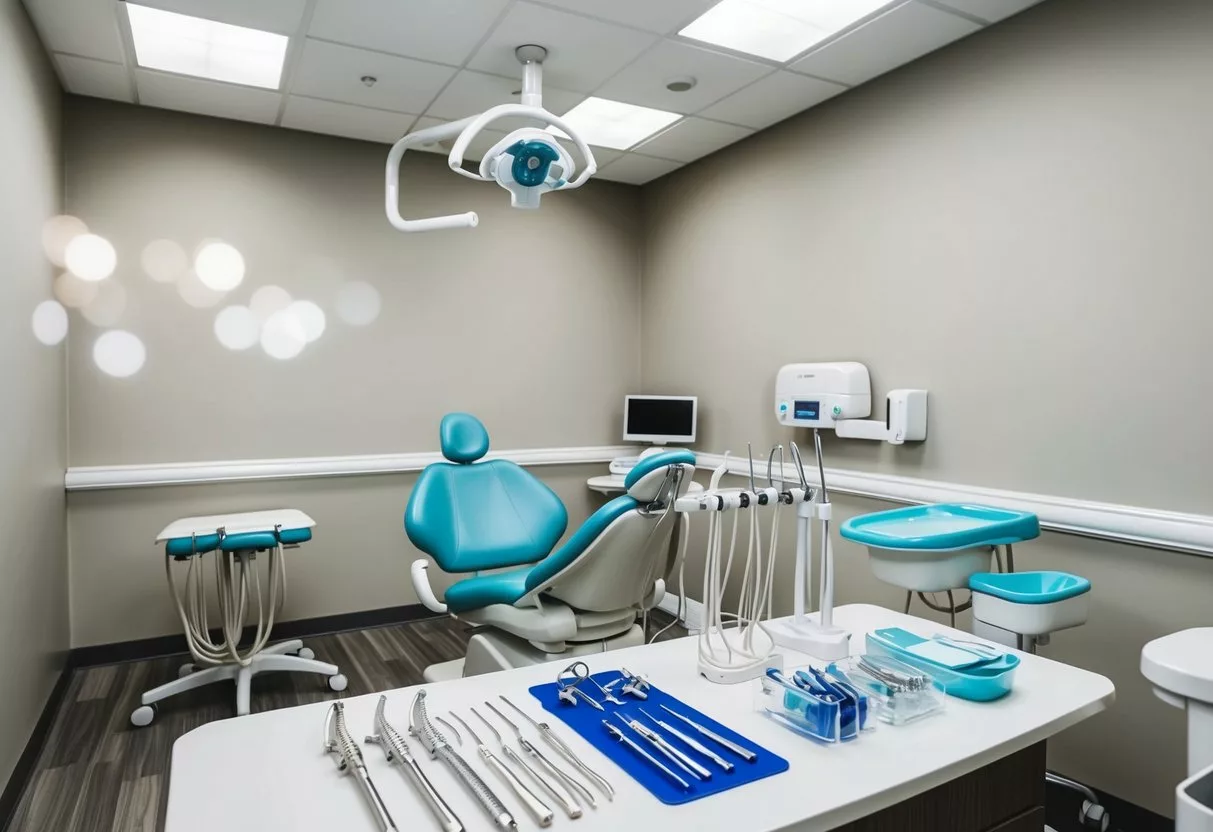
Modern orthodontics offers powerful options for complex dental issues. These techniques can reshape bone and speed up tooth movement for dramatic results.
Orthognathic Surgery
Orthognathic surgery fixes severe jaw alignment problems. It moves the upper jaw, lower jaw, or both to improve bite and facial appearance.
Candidates often have: • Difficulty chewing or biting • Facial imbalance • Sleep apnea • Speech issues
The surgery happens in a hospital under general anesthesia. Surgeons cut and reposition jaw bones. They use small plates and screws to hold bones in new spots.
Recovery takes 6-12 weeks. Patients eat soft foods at first. Full healing can take up to a year. Most see big improvements in function and looks.
Accelerated Orthodontics
This speeds up tooth movement. It can cut treatment time by 30-50%.
Methods include:
- Micro-osteoperforations: Tiny holes made in bone
- Vibration devices: Used 20 minutes daily
- Low-level laser therapy: Stimulates bone cells
These techniques work with braces or aligners. They’re safe when done by trained orthodontists. Side effects are usually mild and short-lived.
Accelerated methods cost more. But many patients find the shorter treatment time worth it. Not everyone is a good fit. Your orthodontist can tell if it’s right for you.
Life After Orthodontic Treatment

Orthodontic treatment can lead to big changes. Patients often see improvements in their smile and dental health. Proper care is key to keeping these benefits long-term.
Maintaining Results
Retainers play a crucial role in keeping teeth aligned after braces or Invisalign. Dentists may recommend wearing them full-time at first, then only at night. Some patients get bonded retainers, which are fixed to the back of teeth.
Retainers prevent teeth from shifting back to their old positions. It’s important to wear them as directed by the orthodontist. Patients should clean their retainers daily to avoid bacteria buildup.
Regular dental check-ups are essential. The dentist can spot any minor shifts early and adjust treatment if needed.
Long-term Oral Health
Good oral hygiene habits are vital after orthodontic treatment. Brushing twice daily and flossing once a day helps prevent cavities and gum disease.
Some patients may want to whiten their teeth after treatment. It’s best to wait about 6 months, as teeth can be sensitive right after braces come off.
Many people feel more confident about their smile after treatment. This boost in self-esteem can positively impact social interactions and overall well-being.
Regular dental cleanings help maintain oral health. Patients should see their dentist every 6 months for check-ups and professional cleanings.
Frequently Asked Questions
Orthodontic treatments involve various factors, procedures, and options. Costs, eligibility, and treatment types differ based on individual needs and preferences.
What factors determine the cost of orthodontic treatment?
The cost of orthodontic treatment depends on several factors. The complexity of the case plays a big role in pricing.
The type of braces or aligners chosen also affects the cost. Traditional metal braces are often less expensive than ceramic or invisible options.
Treatment duration impacts the total cost. Longer treatments typically cost more due to additional appointments and materials.
At what age is a person typically eligible for orthodontic treatment?
The American Association of Orthodontists recommends children have their first orthodontic check-up around age 7. This early evaluation can identify potential issues.
However, orthodontic treatment is not limited to children and teenagers. Many adults choose to straighten their teeth later in life.
There is no upper age limit for orthodontic treatment. Healthy teeth can be moved at any age.
How do traditional braces compare with modern orthodontic alternatives?
Traditional metal braces are still widely used and effective. They are often the most affordable option.
Clear aligners, like Invisalign, offer a nearly invisible alternative. They are removable, making eating and cleaning easier.
Ceramic braces provide a less noticeable option than metal. They work similarly to traditional braces but blend in with teeth.
What are the most common procedures involved in orthodontic treatment?
Fitting braces or aligners is the primary procedure in orthodontic treatment. This involves attaching brackets to teeth or creating custom aligners.
Regular adjustments are necessary throughout treatment. The orthodontist tightens braces or provides new sets of aligners.
Some cases may require tooth extraction or the use of additional appliances like expanders or headgear.
How do I choose between an orthodontist and a general dentist for braces?
Orthodontists receive specialized training beyond dental school. They focus solely on tooth alignment and jaw issues.
General dentists may offer basic orthodontic services. However, they lack the extensive training of orthodontists.
Complex cases are best handled by orthodontists. They have more experience with a wide range of orthodontic issues.
What are the potential risks and benefits of undergoing orthodontic treatment?
Benefits include improved oral health and a more attractive smile.
Straight teeth are easier to clean, reducing the risk of decay and gum disease.
Risks include temporary discomfort and the potential for root resorption.
Proper oral hygiene is crucial to prevent decay during treatment.
Retainers are necessary after treatment to maintain results.
Without them, teeth may shift back to their original positions.